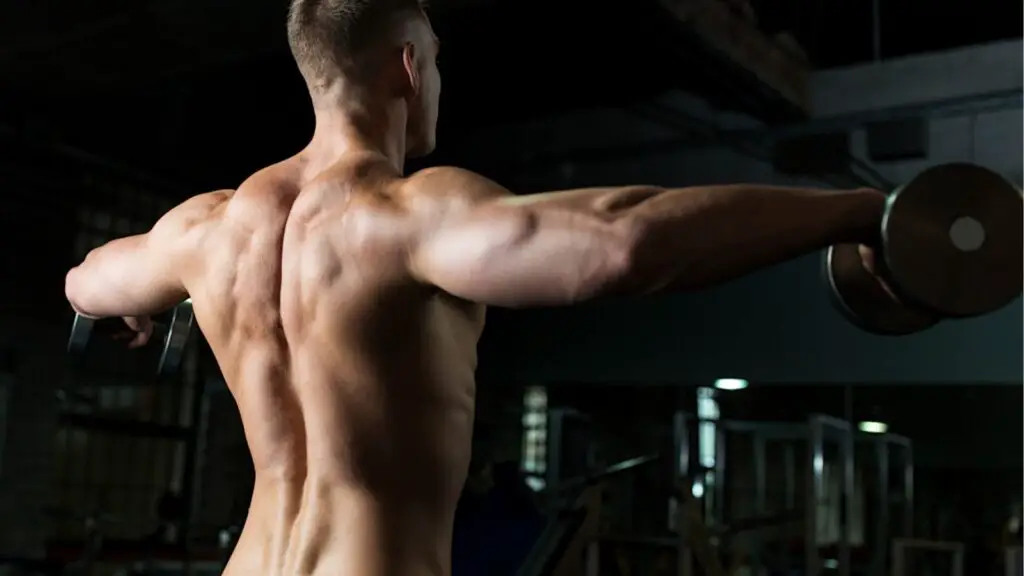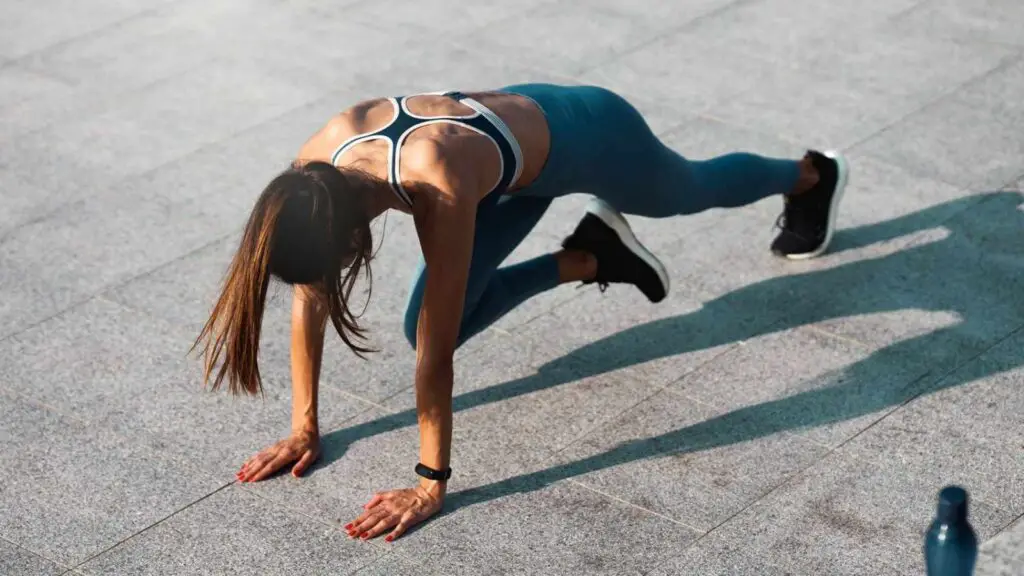I know what you’re thinking. Sumo Squats?
Yes, they can be done by everyone, not just Sumo’s. They are performed in a unique way compared to your usual squats, and are a highly effective exercise.
Sumo Squats and Goblet Squats are variations of squats, working specific muscles in your legs.
In this article, we take a look at Sumo Squats vs Goblet Squats, breaking down each exercise so you know which one is better for you.
What are the similarities?
Sumo squats and goblet squats are both squat variations that target the lower body muscles, but they have some differences in terms of form and execution. Here are the similarities between sumo squats and goblet squats:
Muscle Engagement
- Both sumo squats and goblet squats engage similar muscle groups.
- They primarily target the quadriceps, hamstrings, glutes, and adductors (inner thighs).
Stance Width
- Sumo squats and goblet squats involve a wider stance compared to a traditional squat.
- The wider stance places additional emphasis on the inner thighs and activates the adductor muscles.
Foot Position
- In both sumo squats and goblet squats, the feet are turned outward.
- This foot positioning is characteristic of sumo-style squats and helps engage the inner thighs.
Upright Torso
- Both variations encourage an upright torso throughout the movement.
- Maintaining an upright posture helps target the lower body muscles more effectively and reduces stress on the lower back.
Activation of Core Muscles
- They engage the core muscles to stabilize the spine during the squatting motion.
- This can contribute to improved overall stability and balance.
Suitability for Different Fitness Levels
- Sumo squats and goblet squats can be adapted for various fitness levels.
- Beginners can start with bodyweight or light resistance, while more advanced individuals can add heavier weights to increase the intensity.
Versatility
- Both squat variations can be easily incorporated into various workout routines, including full-body workouts or lower body-focused sessions.
Range of Motion
- The range of motion in sumo squats and goblet squats is typically greater than in traditional squats.
- This increased range of motion allows for a deeper squat, engaging the muscles through a fuller movement.
Both sumo squats and goblet squats offer unique benefits and can be incorporated into a well-rounded lower body workout. The choice between the two may depend on personal preferences, fitness goals, and the equipment available.
What are the differences?
Sumo squats and goblet squats are both squat variations, but they differ in terms of execution, form, and the emphasis on certain muscle groups.
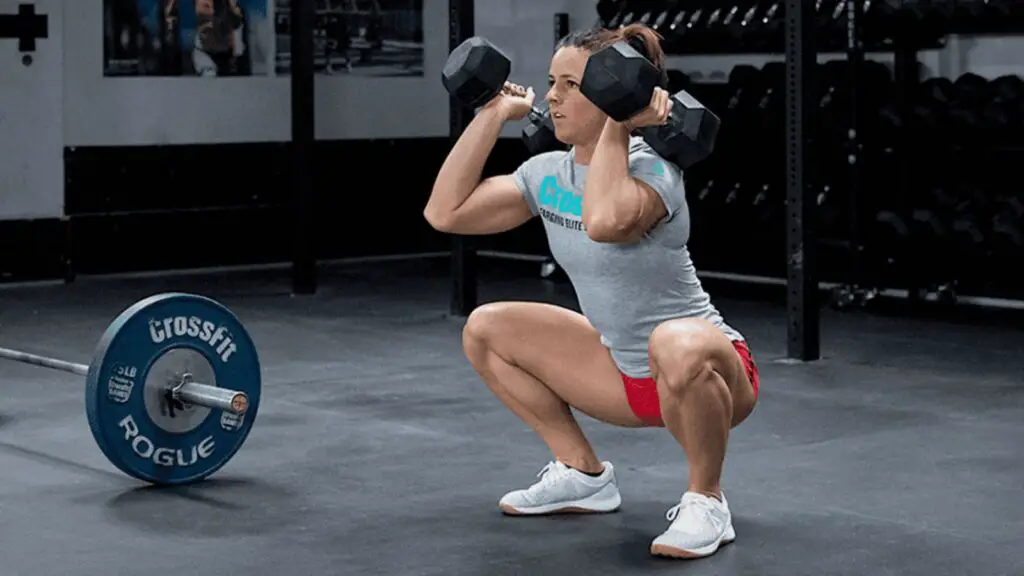
Here are the key differences between sumo squats and goblet squats:
Overall Stance
- Sumo Squats: In a sumo squat, your feet are placed wider than shoulder-width apart, and your toes are turned outward at an angle, resembling the stance of a sumo wrestler.
- Goblet Squats: Goblet squats can be performed with a variety of stances, but the traditional version involves a shoulder-width stance or slightly wider. The feet are usually parallel or turned slightly outward.
Foot Position
- Sumo Squats: The feet are turned outward at a more significant angle than in goblet squats, contributing to the sumo stance.
- Goblet Squats: The feet may be parallel or turned slightly outward, but the emphasis is not on the extreme outward turn seen in sumo squats.
Weight Placement
- Sumo Squats: The weight distribution is generally between the legs, and you may choose to perform sumo squats without any additional weight or with a barbell.
- Goblet Squats: Goblet squats involve holding a weight close to the chest with both hands, such as a dumbbell or kettlebell. The weight is held vertically, which contributes to core engagement.
Hand Position
- Sumo Squats: The hands can be positioned in various ways, such as resting on the thighs or holding a barbell.
- Goblet Squats: The hands are positioned under the weight, supporting it close to the chest.
Muscle Emphasis
- Sumo Squats: Emphasize the inner thighs (adductors) to a greater extent due to the wider stance.
- Goblet Squats: Engage a broader range of lower body muscles, including the quadriceps, hamstrings, glutes, and adductors, as well as the core.
Equipment
- Sumo Squats: Can be performed without any additional equipment or with a barbell.
- Goblet Squats: Typically involve holding a weight, such as a dumbbell or kettlebell.
The main difference between the Sumo quats and goblet squats are the way it’s performed, with the Sumo squats specifically emphasizing a wider stance with the feet turned outward, resembling a sumo wrestler’s stance.
Goblet squats however, involve holding a weight close to the chest, contributing to more core engagement and an upright torso.
Target muscle
Sumo squats and goblet squats target similar muscle groups, but there are slight variations in how much certain muscles are activated.
Here are the primary muscle groups targeted by each exercise:
Sumo Squats:
- Inner Thighs (Adductors): The wide stance and turned-out feet in sumo squats place a significant emphasis on the inner thighs.
- Quadriceps: The quadriceps are actively engaged to straighten the knee during the ascent phase of the squat.
- Hamstrings: The hamstrings play a role in hip extension during the upward phase of the squat.
- Glutes: The glute muscles, particularly the gluteus maximus, are involved in hip extension.
- Calves: The calf muscles are activated to a certain extent during the movement.
Goblet Squats:
- Quadriceps: Goblet squats actively engage the quadriceps as you bend and straighten the knees.
- Hamstrings: The hamstrings are involved in hip extension during the upward phase.
- Glutes: The glutes, especially the gluteus maximus, are engaged for hip extension.
- Adductors: While not as pronounced as in sumo squats, goblet squats also work the adductors to some extent.
- Calves: The calf muscles are activated during the movement, particularly during the push-off phase.
- Core Muscles: Goblet squats engage the core muscles, including the rectus abdominis and obliques, to stabilize the spine.
Additional Notes:
- Both exercises provide a comprehensive lower body workout, targeting the major muscle groups of the thighs and hips.
- Sumo squats place a greater emphasis on the inner thighs due to the wide stance, making them effective for targeting the adductors.
- Goblet squats, while still working the inner thighs, offer the added benefit of engaging the core muscles due to the front-loaded position of the weight.
- Both exercises can be effective for building strength, improving muscle tone, and enhancing overall lower body function.
Remember, the specific muscles engaged can vary based on factors such as individual biomechanics, form, and the presence or absence of external resistance.
Incorporating both sumo squats and goblet squats into your workout routine can provide a well-rounded lower body training stimulus.
How to do Sumo Squats?
Sumo squats are a variation of the traditional squat, targeting the leg muscles differently.
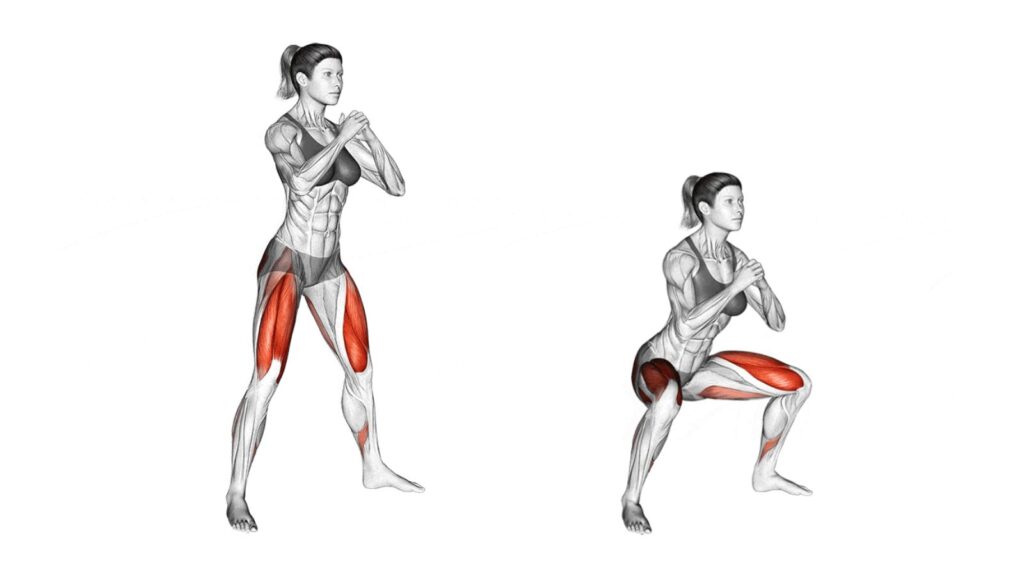
Here’s how to perform sumo squats with proper form:
1. Starting Position
- Stand with your feet wider than shoulder-width apart. In a sumo squat, the feet are turned outward at an angle, similar to a sumo wrestler’s stance.
- Ensure your toes are pointing slightly outward, and your knees are in line with your toes.
2. Hand Placement
- You can choose to keep your hands in a prayer position at your chest, or extend them straight out in front of you for balance.
- Alternatively, you can place your hands on your hips or let them hang by your sides.
3. Squat Descent
- Lower your body by bending at the hips and knees. Imagine sitting back into a chair.
- Keep your back straight and chest up. Avoid leaning too far forward.
- Focus on pushing your knees outward as you lower your body to engage the inner thighs.
4. Depth
- Ideally, aim to lower your body until your thighs are parallel to the ground.
- However, the depth can vary based on your flexibility and comfort. Avoid going lower if it causes discomfort or compromises your form.
6. Upright Torso
- Maintain an upright torso throughout the movement.
- This helps engage the core and ensures proper alignment.
7. Knees and Toes Alignment
- Keep your knees tracking in line with your toes.
- Avoid letting your knees collapse inward.
8. Push Through Heels
- As you ascend, push through your heels to engage the glutes and hamstrings.
- Keep your weight evenly distributed across both feet.
9. Repeat
- Complete the desired number of repetitions.
- Control the movement both on the way down and on the way up.
10. Breathing
- Inhale as you lower into the squat.
- Exhale as you push through your heels to return to the starting position.
Tips:
- Start with bodyweight sumo squats to get the form right before adding additional resistance.
- Gradually increase the depth and intensity as your strength and flexibility improve.
- If using weights, hold a dumbbell or kettlebell with both hands in front of you or use a barbell.
Remember to listen to your body, and if you have any discomfort or pain, stop the exercise. If you’re new to exercise or have any pre-existing conditions, consider consulting with a fitness professional for guidance.
When should you do Sumo Squats?
Sumo squats, like any exercise, can be included in your workout routine based on your fitness goals, preferences, and overall workout structure. Here are some considerations for when to incorporate sumo squats into your workout routine:
- Lower Body or Full-Body Workouts: Sumo squats are excellent for lower body strength and muscle engagement, especially targeting the inner thighs. You can include them in lower body workout sessions or as part of full-body workouts.
- Strength Training Days: If your goal is to build strength in the lower body, consider incorporating sumo squats on strength training days. You can perform them with added resistance, such as dumbbells or a barbell, to increase the intensity.
- Leg Day: Sumo squats can be a valuable addition to a dedicated leg day. Combine them with other lower body exercises like lunges, leg presses, or hamstring curls for a comprehensive leg workout.
- As a Finisher: Use sumo squats as a finisher at the end of your workout to add a final burn to your muscles. This can be effective for muscle endurance and metabolic conditioning.
- Circuit Training: If you’re doing circuit training, sumo squats can be a part of a circuit that includes various exercises targeting different muscle groups.
- Functional Training: Include sumo squats in functional training routines, as they mimic movements that you might perform in daily life, such as picking up objects from the ground.
- Interval Training: If you’re incorporating interval training into your routine, sumo squats can be included during the high-intensity intervals for an effective lower body workout.
- Bodyweight Workouts: Sumo squats can be performed as part of bodyweight workouts, making them accessible for home workouts or when you don’t have access to gym equipment.
- Flexibility and Mobility Days: Sumo squats can also be beneficial for improving hip flexibility and mobility. Include them on days dedicated to stretching and mobility exercises.
- Dynamic Warm-Up: Include sumo squats in your dynamic warm-up routine. Performing them with bodyweight helps increase blood flow to the muscles, improves joint mobility, and prepares your body for more intense exercises.
Tailor your workout routine to your individual fitness level and goals, increasing the difficulty as you make progress. The most important thing is to maintain proper form so you don’t injure yourself.
Benefits of Sumo Squats
Sumo squats offer various benefits for the lower body and overall fitness, being a highly effective exercise.
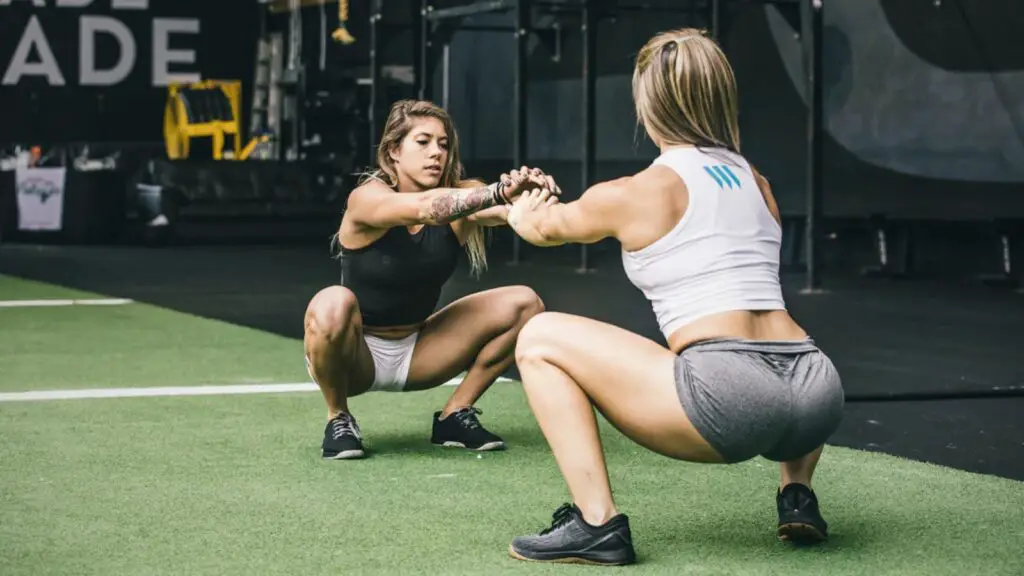
Here are some of the advantages of incorporating sumo squats into your workout routine:
- Full-Body Engagement: Sumo squats engage multiple muscle groups simultaneously, providing a comprehensive lower body workout. This can also activate the core muscles for stability.
- Inner Thigh Engagement: Sumo squats specifically target the inner thighs (adductors) due to the wide stance and turned-out feet. This can contribute to improved muscle tone and strength in this area.
- Quadriceps Development: The quadriceps are actively engaged during sumo squats, helping to strengthen and tone the muscles on the front of the thighs.
- Glute Activation: Sumo squats involve hip extension, which activates the glute muscles (particularly the gluteus maximus). This can contribute to better gluteal strength and development.
- Hamstring Involvement: The hamstrings play a role in hip extension during the upward phase of sumo squats, leading to improved hamstring strength.
- Enhanced Hip Flexibility: The wide stance and turned-out feet in sumo squats contribute to improved hip flexibility. Regular practice can help enhance the range of motion in the hip joints.
- Increased Ankle Mobility: The turned-out foot position in sumo squats can help improve ankle mobility. This is particularly beneficial for individuals with limited ankle flexibility.
- Calorie Burning: Like any compound movement, sumo squats can contribute to calorie burning, making them beneficial for those aiming to manage weight or improve overall cardiovascular health.
- Functional Movement: The squatting motion in sumo squats mimics movements used in daily activities, making it a functional exercise that can contribute to better overall functional fitness.
Remember to perform sumo squats with proper form to maximize their effectiveness and minimize the risk of injury.
Cons of Sumo Squats
While sumo squats offer several benefits, it’s important to be aware of potential drawbacks or considerations associated with this exercise.
Here are some potential cons of sumo squats:
- Strain on Knees: The wide stance and outward rotation of the feet in sumo squats may put additional stress on the knees, especially for individuals with existing knee issues. It’s important to ensure proper form and avoid excessive knee movement.
- Hip Mobility Requirements: Some individuals may find it challenging to achieve the wide stance and deep squat position required for sumo squats, particularly if they have limited hip mobility. This can lead to discomfort or compensatory movements.
- Lower Back Stress: If performed with improper form, sumo squats can place stress on the lower back. It’s crucial to maintain an upright torso and avoid excessive forward lean to protect the lower back.
- Balance Challenges: The wider stance in sumo squats may pose balance challenges for some individuals, especially if they are new to the exercise. Using a stable surface for support or starting with bodyweight squats may help.
- Equipment Availability: To add resistance to sumo squats, such as using dumbbells or a barbell, you need access to gym equipment. Some individuals may prefer exercises that require minimal or no equipment.
- Inner Thigh Dominance: While sumo squats effectively target the inner thighs, individuals looking for a more balanced leg workout may need to incorporate additional exercises that engage the outer thighs and other muscle groups.
- Individual Comfort: The wide stance of sumo squats may not be comfortable for everyone. Some individuals may prefer other squat variations that better suit their body mechanics and comfort levels.
As with any exercise, it’s essential to listen to your body, use proper form, and consider your individual fitness level and any pre-existing conditions.
Incorporating a variety of exercises into your routine can help ensure a well-rounded and balanced approach to fitness.
How to do Goblet Squats?
Goblet squats are a compound exercise that targets various muscles, including the quadriceps, hamstrings, glutes, and core muscles.

Here’s a step-by-step guide on how to perform goblet squats with proper form:
1. Set Up
Stand with your feet shoulder-width apart or slightly wider. Position your feet with a slight outward turn.
2. Hold the Weight
Hold a dumbbell or kettlebell vertically close to your chest with both hands. If you’re using a dumbbell, cup one end with both hands, keeping your elbows close to your body.
3. Engage Your Core
Brace your core muscles by pulling your belly button in toward your spine. This helps stabilize your spine throughout the movement.
4. Initiate the Squat
Begin the squat by pushing your hips back and bending your knees. Imagine sitting back into a chair.
Keep your chest up and your back straight. Avoid rounding your back, and maintain a neutral spine throughout the movement.
5. Lower Your Body
Descend into the squat by lowering your body toward the ground. Aim to bring your thighs parallel to the ground or lower if your flexibility allows. Keep your knees tracking over your toes.
6. Maintain Upright Torso
Keep your torso as upright as possible. Avoid leaning too far forward, which can put excessive stress on your lower back.
7. Depth
If your flexibility allows, go as deep into the squat as you can while maintaining good form. The depth can vary among individuals.
8. Drive Through Heels
As you ascend, push through your heels to return to the starting position. This engages your glutes and hamstrings.
9. Finish the Squat
Stand up fully, extending your hips and knees. Ensure your knees are not locked at the top of the movement.
10. Repeat
Perform the desired number of repetitions. Start with a weight that allows you to maintain proper form, and gradually increase the weight as you become more comfortable with the movement.
11. Breathing
Inhale as you lower into the squat.
Exhale as you push through your heels to return to the starting position.
Tips:
- Keep your elbows pointed down, and avoid letting them flare outward.
- Focus on controlled, smooth movements throughout the exercise.
- Ensure your knees are tracking in line with your toes and not collapsing inward.
- If you experience any pain or discomfort, especially in the lower back or knees, reassess your form or consult with a fitness professional.
Goblet squats are a versatile exercise suitable for various fitness levels. They can be included in full-body workouts, lower body workouts, or as part of a circuit training routine.
When should you do Goblet Squats?
Goblet squats can be included in your workout routine based on your fitness goals, preferences, and overall training structure.
Here are some scenarios in which you might consider incorporating goblet squats:
- Full-Body Workouts: Goblet squats are a compound exercise that engages multiple muscle groups, making them suitable for full-body workout sessions. Including goblet squats can provide a comprehensive training stimulus.
- Lower Body Strength Training: Being effective for targeting the muscles of the lower body, goblet squats can be incorporated into dedicated strength training workouts.
- Beginner Workouts: They are beginner-friendly and can be a good introduction to squatting movements. The use of a dumbbell or kettlebell as a counterbalance can make the exercise more accessible.
- Circuit Training: Goblet squats can be part of a circuit training routine where you perform a series of exercises in sequence with minimal rest between them. This adds an element of cardiovascular conditioning to your workout.
- Dynamic Warm-Up: Incorporate goblet squats into your dynamic warm-up routine. Performing them with bodyweight or light resistance helps increase blood flow, joint mobility, and prepares your muscles for more intense exercises.
- Interval Training: Include goblet squats in high-intensity interval training (HIIT) workouts. The explosive nature of squats can contribute to the intensity of the workout.
- Recovery or Active Rest Days: On days when you want to stay active but have a lower-intensity session, goblet squats with moderate resistance can be included for active recovery.
- Flexibility and Mobility Training: Goblet squats, when performed with a focus on proper form, can contribute to improved hip flexibility and mobility. Include them in routines aimed at enhancing range of motion.
Remember to customize your workout routine based on your individual fitness level, goals, and any specific considerations.
If you have pre-existing health conditions or concerns, it’s advisable to consult with a fitness professional or healthcare provider for personalized guidance.
Benefits of Goblet Squats
Goblet squats are a versatile and effective exercise that provides numerous benefits for the body.
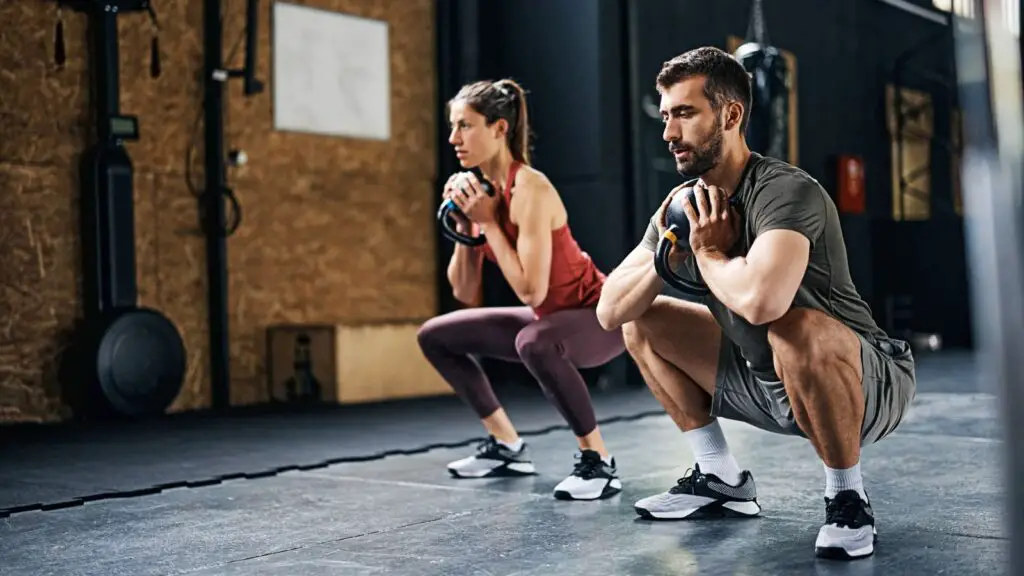
Here are some of the advantages of incorporating goblet squats into your workout routine:
- Lower Body Strength: Goblet squats target the muscles of the lower body, including the quadriceps, hamstrings, and glutes. This helps to build strength in these key muscle groups.
- Core Engagement: Holding the weight close to your chest during goblet squats engages the core muscles. This provides a dual benefit of working the lower body and the core simultaneously.
- Improved Posture: Goblet squats encourage an upright torso and proper spinal alignment. Regular practice can contribute to improved posture by strengthening the muscles that support the spine.
- Versatility: They are versatile and can be adapted to various fitness levels. Beginners can start with bodyweight or light resistance, while more advanced individuals can use heavier weights.
- Increased Range of Motion: Performing goblet squats with proper form can contribute to improved hip and knee flexibility. This increased range of motion can be beneficial for overall joint health.
- Beginner-Friendly: Goblet squats are beginner-friendly and can serve as an introduction to squatting movements. The counterbalance provided by the weight can make the exercise more accessible.
- Enhanced Hip Mobility: Goblet squats involve a hip hinge motion, contributing to improved hip mobility. This is particularly beneficial for individuals with sedentary lifestyles.
- Scalable Intensity: The intensity of goblet squats can be easily adjusted by changing the weight used. This allows for progressive overload and continued strength gains.
Incorporating goblet squats into your workout routine can offer a well-rounded lower body workout with additional benefits for core strength, posture, and functional fitness.
As with any exercise, it’s essential to perform goblet squats with proper form to maximize their effectiveness and minimize the risk of injury.
Cons of Goblet Squats
While goblet squats offer numerous benefits, it’s important to be aware of potential drawbacks or considerations associated with this exercise.
Here are some potential cons of goblet squats:
- Limited Load Capacity: Goblet squats may not be suitable for individuals seeking to lift extremely heavy weights. The nature of holding a weight close to the chest limits the amount of load that can be used compared to other squat variations.
- Wrist and Elbow Discomfort: Some individuals may experience discomfort in the wrists or elbows, especially when using a dumbbell. This can be addressed by using a kettlebell or adjusting hand placement.
- Challenging for Individuals with Back Issues: While goblet squats generally promote good spinal alignment, individuals with pre-existing back issues may find the forward-leaning position uncomfortable. It’s crucial to prioritize proper form and consider alternatives if needed.
- Not Ideal for Advanced Lifters: Advanced lifters who are accustomed to lifting very heavy weights may find goblet squats limiting in terms of load capacity. In such cases, other squat variations or front squats might be more suitable.
- Balancing Challenges: Some individuals may initially struggle with balance, especially if they are new to strength training. Ensuring a stable base and starting with bodyweight squats can help address this concern.
- May Not Fully Target Outer Thighs: While goblet squats effectively target the inner thighs, they may not engage the outer thighs (abductors) to the same extent. Supplementing with exercises that target the outer thighs may be necessary for a well-rounded leg workout.
- Risk of Neck Strain: Holding a weight close to the chest can put some strain on the neck and upper traps. It’s essential to maintain a comfortable grip and consider alternatives if discomfort persists.
- Variation in Individual Comfort: The positioning of the weight in front of the body may not be comfortable for everyone. Some individuals may prefer other squat variations that better suit their body mechanics and comfort levels.
As with any exercise, individual differences, fitness levels, and goals play a role in determining the suitability of goblet squats.
FAQs
Can you do Sumo squats and Goblet squats together?
Yes, you can certainly include both in the same workout routine.
In fact, combining different squat variations can be a beneficial approach to target various muscles and movement patterns within your lower body. Each squat variation places emphasis on slightly different muscle groups, providing a well-rounded lower body workout.
Are Sumo squats easier than goblet squats?
The perceived difficulty of Sumo squats compared to goblet squats can vary from person to person based on individual factors such as strength, flexibility, and personal preferences.
Generally, Sumo squats are easier than goblet squats, since they require holding a weight at chest height, which adds an upper body challenge, requiring additional core stabilization.
Sumo squats and goblet squats can be effective lower body exercises, and the choice between them often depends on individual goals. Both exercises can be modified in terms of depth, weight, and volume to accommodate different fitness levels.

